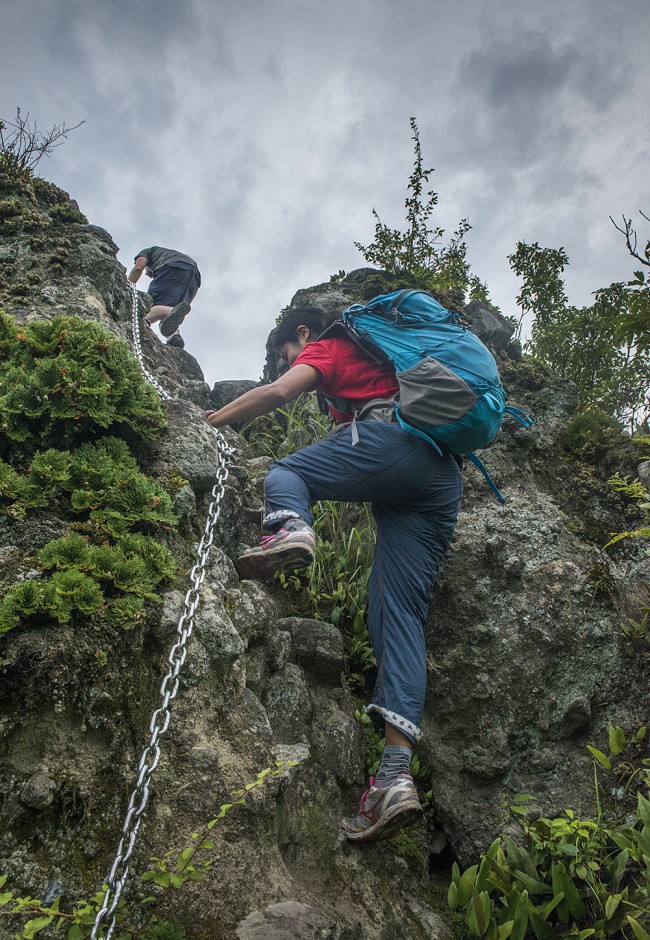Japan’s southern main island of Kyushu tends to be off the international travelers map because of its distance from the popular destinations of Kyoto and Tokyo. For those who do make it to Kyushu the hot spring towns of Beppu and Yufuin and the dramatic landscape of Mt. Aso are well worth the trip. But farther afield and far less traveled is the Kunisaki Peninsula on Kyushu’s northeast coast. For some, this off-the-grid remoteness in our highly wired digital age is one of the attractions.
Walk Japan, the leading tour operator for exploring the country on foot has plotted out a number of dramatic walks through the Kunisaki, literally in the footsteps of monks that have used these trails for pilgrimages throughout the centuries.
Travelers on their way to Kunisaki often start with a visit to Usa Jingu (Usa Shrine), for a bit of “travel insurance” from Hachiman, the protector god of Japan who is deified at this Shinto holy site. The original Usa Jingu dates back 1200 years while the present shrine buildings date from the mid-nineteenth century.
Two nights of Walk Japan’s Kunisaki Trek are spent at Fukinotou, a classic ryokan (Japanese style inn), with an onsen (thermal hot springs) and world-class cuisine. Next to the ryokan is Fuki-ji, a temple complex that includes one of the simplest and most beautifully understated Buddhist structures in the country.
We spend the next several days exploring the Kunisaki Peninsula on foot passing Buddhist statues perched in caves surrounded by dramatic mountainscapes that are reminiscent of the jutting peaks of Guilin.
On one afternoon we take on a particularly challenging route to Mumyo-bashi, a dramatically placed bridge suspended between two crags. A cliff-hugging descent using chains secured to rocks adds to the adventure.
A side excursion to the island of Himeshima, 20 minutes off the Kunisaki Peninsula by ferry, gives us a very different experience. The pace changes to that of an island. A leisurely walk through a maze of old homes and then up a hill brings us to a small temple, Sennin-do, quietly overseeing the Seto Inland Sea.
A final day of hiking takes us to Kumano Magaibutsu to view giant rock carvings of the Buddha. The day, heavy in mist, seems to enhance the serenity of these magnificent works of art. While we can’t bring them back with us to our 21st century lives, perhaps a bit of the tranquility and mindfulness we’ve experienced on the Kunisaki will travel back with us to our respective homes.
Photo Credits
All Photographs and Text Are © Mark Edward Harris
Mark Edward Harris Photographer Bio
 Mark Edward Harris’ editorial work has appeared in publications such as Vanity Fair, Life, GEO, Conde Nast Traveler, GQ Thailand, Tatler Russia, The Los Angeles Times Sunday Magazine, and The London Sunday Times Travel Magazine as well as all the major photography and in-flight magazines. His commercial clients range from The Gap to Coca-Cola to Mexicana Airlines. He is the recipient of numerous awards including a CLIO, ACE, Aurora Gold, and Photographer of the Year at the Black & White Spider Awards. His books include Faces of the Twentieth Century: Master Photographers and Their Work, The Way of the Japanese Bath, Wanderlust, North Korea, South Korea, and Inside Iran. North Korea was named Photography Book of the Year at the 2013 International Photography Awards.
Mark Edward Harris’ editorial work has appeared in publications such as Vanity Fair, Life, GEO, Conde Nast Traveler, GQ Thailand, Tatler Russia, The Los Angeles Times Sunday Magazine, and The London Sunday Times Travel Magazine as well as all the major photography and in-flight magazines. His commercial clients range from The Gap to Coca-Cola to Mexicana Airlines. He is the recipient of numerous awards including a CLIO, ACE, Aurora Gold, and Photographer of the Year at the Black & White Spider Awards. His books include Faces of the Twentieth Century: Master Photographers and Their Work, The Way of the Japanese Bath, Wanderlust, North Korea, South Korea, and Inside Iran. North Korea was named Photography Book of the Year at the 2013 International Photography Awards.
Website: MarkEdwardHarris.com
Follow Mark Edward Harris on: Instagram
Travel Website: http://www.walkjapan.com/





Lovely post Mark.
Love the images and your words 🙂
Best
Bob